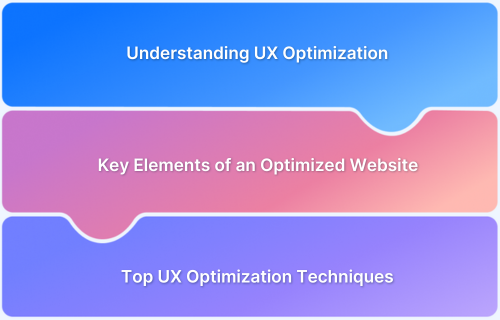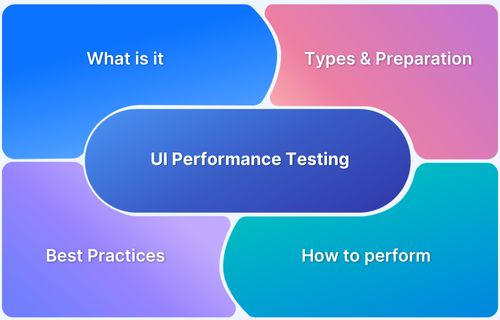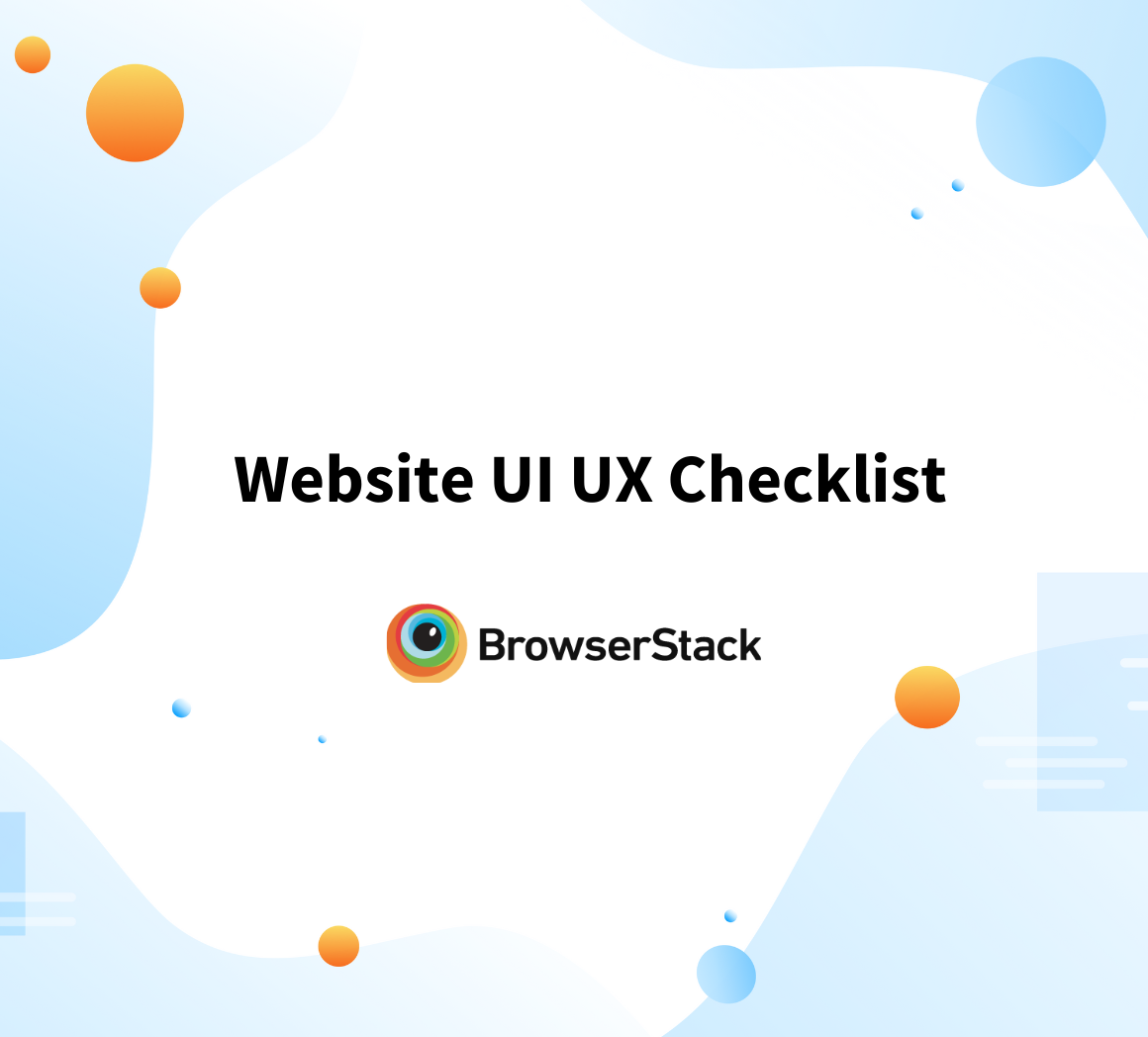A great user experience (UX) is the foundation of any successful website, app, or digital product. When users can navigate effortlessly, find what they need quickly, and enjoy a smooth interaction, they are more likely to stay engaged and return.
Overview
UX optimization is about refining design, functionality, and usability to create a seamless and enjoyable user experience.
Top User Experience (UX) Optimization Techniques:
- Improve Website/Page Load Speed: Faster load times reduce bounce rates and improve engagement.
- Optimize Navigation for Better Usability: Simplify menus and ensure intuitive site structure.
- Implement Responsive and Mobile-Friendly Design: Ensure a seamless experience across all devices.
- Enhance Readability and Typography: Use legible fonts, proper spacing, and contrast for better clarity.
- Use Clear Call-to-Actions (CTAs): Guide users effectively with compelling, well-placed CTAs.
- Reduce Friction in Forms and Checkout Processes: Minimize steps and simplify inputs for smoother interactions.
- Leverage Visual Hierarchy and White Space: Direct user focus with structured layouts and clean design.
- Personalization and User-Centric Design: Deliver relevant experiences tailored to user preferences.
- Accessibility and Inclusive Design: Make content usable for all, including people with disabilities.
- Test on Real Devices for Accurate UX Optimization: Identify real-world issues by testing on actual devices.
This article explores the best UX techniques to enhance usability, boost engagement, and improve overall user experience.
Understanding UX Optimization
User experience (UX) optimization focuses on making websites and apps more intuitive, efficient, and enjoyable for all users. It involves collecting user feedback, analyzing data, and applying thoughtful design principles to enhance usability and overall experience.
The process is a team effort, with UX researchers, designers, product managers, and developers working to ensure the application meets user needs and expectations.
A well-optimized website loads quickly, is easy to navigate, works on any device, and presents information clearly. The goal is to help users quickly find what they need with minimal effort, leading to a better experience and improved business results.
Read More: Website User Experience (UI/UX) Checklist
What Should an Optimized Website Have?
Some key elements of a good website include:
- Easy Navigation: A clear and organised navigation system is crucial for keeping the users engaged. Elements like a simple header, breadcrumbs, search bar, footer and site map make it easier to find important content.
- Responsive Design: A website should look and function well across all devices, from smartphones to desktops, ensuring an excellent user experience.
- Strong Security: Security is important for building trust. Implementing regular audits, SSL certificates, and strong passwords helps protect the site from any cyber threats.
- SEO Optimization: Optimizing a website for different search engines ensures better rankings, making it easier for users to discover the site through relevant search queries.
- Structured Data: It enables search engines to better understand the context of content, potentially boosting visibility and driving more traffic.
- Up-to-date Content: Regular website updates ensure the site stays relevant and secure. Fresh content encourages users to return and engage with the site.
- Clear Value Proposition: A good website clearly communicates what it offers and why it is valuable. Highlighting what makes the site or product unique helps establish credibility.
- Engaging Copy: Website content should be clear, concise, and compelling. It should directly address the audience’s needs and interests while keeping the language simple and jargon-free.
- Quality Visuals: High-quality, original images that align with the brand and content make the website more visually appealing and professional while enhancing the overall user experience.
- Site Engagement: Tools like Google Analytics help monitor user behavior and understand how users interact with the site. This information can be used to optimize the website and keep users engaged.
- Lead Capture: A great website helps capture and segment leads, allowing businesses to tailor communications and better address the needs of different user groups.
Top 10 UX Optimization Techniques
Delivering a seamless and high-quality user experience across multiple devices, browsers, and operating systems is critical for any digital product. Some of the best UX Optimization techniques include:
1. Improve Website/Page Load Speed
Website speed plays a crucial role in search rankings and delivering a seamless user experience. Slow-loading pages can lead to higher bounce rates and lower conversions. Testing website speed across various devices and browsers is essential to identify issues and ensure optimal performance.
With BrowserStack SpeedLab, users can analyze website speed on real devices and browsers. This cloud-based tool generates detailed performance reports and scores, making it easier to detect bottlenecks and enhance overall site speed.
2. Optimize Navigation for Better Usability
Clear and intuitive navigation enhances the user experience by making it easier for users to find what they’re looking for. A well-structured navigation system reduces frustration and improves engagement.
Organize menus, limit categories, and provide a search bar for quick access. Ensuring consistent and straightforward navigation across pages helps improve usability and retention.
3. Implement Responsive and Mobile Friendly Design
As more people access websites using mobile devices, ensuring a responsive design is critical. A mobile-friendly design adapts to different screen sizes, offering users a smooth experience while browsing on a tablet, desktop, or phone.
With BrowserStack Live, developers can test websites on real devices and browsers, ensuring flawless responsiveness and usability. This helps identify layout issues, improve performance, and deliver a consistent user experience across all screen sizes.
4. Enhance Readability and Typography
Clear and readable typography improves user experience by making content easy to read and understand. Use legible fonts, appropriate font sizes, and line spacing to make text readable across all devices.
Choosing high-contrast colors and avoiding too much text in one block can further improve the user experience, making the website more engaging.
5. Use Clear Call-to-Actions (CTAs)
Well-placed and clear CTAs guide users toward the desired actions, such as purchasing a product or subscribing to a newsletter. The CTA text should be concise and action-oriented, like ‘Buy Now’ or ‘Sign Up Today’.
CTAs should be placed strategically on high-traffic pages, ensuring users know exactly what to do next. Using contrasting colors can further enhance visibility and make them stand out.
Read More: How to Create a Successful Website
6. Reduce Friction in Forms and Checkout Processes
Reducing friction in forms and checkout processes improves user experience and increases conversion rates. Keep forms short by requesting essential information necessary to complete the action. Use progress indicators for multi-step forms, provide clear error messages, and enable autofill to speed up entry.
For a seamless checkout experience, offer multiple payment options, minimize required fields, and ensure a mobile-friendly design. A streamlined process removes barriers, reduces drop-offs, and enhances user satisfaction.
7. Leverage Visual Hierarchy and White Space
Visual hierarchy helps users focus on key elements by using color, size, and placement to highlight important features. This makes navigation intuitive and ensures that essential information stands out. White space, or negative space, creates separation between elements, reduces clutter, and improves readability.
By combining these techniques, websites achieve a clean, structured layout that enhances usability, improves user engagement, and provides a visually appealing experience.
Read More: 30 Website Design Tips to follow in 2025
8. Personalization and User-Centric Design
Personalization makes users feel more connected to a website by delivering content tailored to their interests and behavior. Features like product recommendations, location-based content, and customized messaging enhance engagement and satisfaction.
A user-centric design goes beyond personalization by ensuring the website aligns with its audience’s needs and preferences. By focusing on intuitive navigation, accessibility, and relevant content, websites can offer a seamless and enjoyable user experience.
9. Conduct UX Testing and Gather Feedback
UX testing provides valuable insights into how real users interact with a website, helping to uncover pain points and areas for improvement. Gathering feedback through surveys, usability tests, and analytics tools ensures a data-driven approach to enhancing user experience.
Continuous testing and iteration help refine the design, optimize functionality, and align the website with user needs and expectations, leading to a more seamless and engaging experience.
Read More: Top 20 UI Automation Testing Tools
10. Accessibility and Inclusive Design
Accessibility ensures that everyone, including users with disabilities, can navigate and interact with a website effectively. Implementing features like keyboard navigation, screen reader compatibility, and sufficient color contrast enhances usability for all.
BrowserStack Accessibility helps developers test websites for WCAG compliance on real devices and browsers. It identifies accessibility barriers, ensuring an inclusive and user-friendly experience for a diverse audience.
Read More: Website Accessibility Checklist
Why Choose BrowserStack for Real Device Testing?
Delivering a seamless and high-quality user experience across multiple devices, browsers, and operating systems is critical for any digital product.
BrowserStack provides a comprehensive testing infrastructure that ensures your website or application meets the highest UX standards. Here’s why BrowserStack is the ideal choice for UX optimization:
- Real Device Testing for Accurate UX Insights: Test your website or app on real devices to ensure a flawless experience and avoid inconsistencies that emulators and simulators might miss.
- Cross-Browser and Cross-Device Compatibility: A seamless UX requires a consistent experience across different browsers and devices. With BrowserStack, you can test on 3500+ browser-device combinations to identify inconsistencies and fix them before your users encounter any issues.
- Visual Testing with Percy: Detect even the smallest UI inconsistencies with automated visual regression testing, maintaining design integrity across updates.
- Performance and Responsiveness Testing: Evaluate how your application performs under different network conditions and screen sizes, ensuring optimal speed and smooth interactions.
- Seamless Integration with CI/CD Workflows: BrowserStack makes it effortless to integrate UX testing into your CI/CD workflows. It supports popular automation frameworks and CI tools like Jenkins, GitHub Actions, and CircleCI, ensuring continuous testing and rapid feedback on design and functionality changes.
Conclusion
A good UX is essential for creating an intuitive, engaging, and user-friendly website. By incorporating these UX best practices and leveraging tools like BrowserStack for real device testing, websites can significantly improve usability, engagement, and conversion rates.
Prioritizing user experience not only meets users’ needs but also helps a website stand out in a competitive market. Continuous testing, gathering feedback, and making data-driven improvements ensure long-term success, higher user satisfaction, and a lasting impact.





